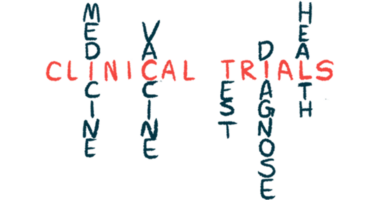Pacing myself as one of my pain management strategies
Short stretches of exercise can help control the hurt I'll experience, my coach says

People with hemophilia experience prolonged bleeding, even from minor injuries, and may also experience spontaneous bleeding into joints, muscles, and other organs. These bleeds can cause pain, joint damage, and other complications, making pain management an essential aspect of hemophilia care.
To alleviate intermittent pain, I employ a combination of ice, the anti-inflammatory medication meloxicam, and the pain reliever tramadol. The most recent severe pain I encountered was from a tongue bleed. With age, my joints have become more prone to pain, stiffness, and swelling, and consequently, my level of physical activity has declined.
Last week, I participated in an online pain management session sponsored by a regional hospital. I was hesitant to join initially, as I believed I didn’t require assistance in this area. But I hadn’t used my Peloton bike in several weeks because of my painful swollen knee, and walking continues to be challenging. I realized that attending a pain management session couldn’t hurt.
It turned out that I was the only person interested in learning more about pain management on that particular day. As a result, I received one-on-one help from a delightful woman I’ll call my coach.
During the session, we discussed my pain concerns and how they affected my physical activity and daily life. We discussed typical strategies, like use of heat and cold, physical therapy, biofeedback, massage, stress management, injections, and surgery.
Learning to pace myself
My interest was piqued when the coach suggested a technique she called pacing, which involves breaking up daily activities into manageable segments to avoid exacerbating pain. With pacing, you set achievable goals and gradually increase activity levels over time. Pacing can be used with any activity, including exercise, gardening, or housework.
I was concerned about how pain had influenced my lack of activity. My coach thus advised me to dedicate myself to an exercise that may cause discomfort, but to limit it to just 10 minutes a day — for instance, taking a short walk or bike ride, but with the condition that the activity must be done daily, without exception, and last for no more than 10 minutes. That should help my body adapt to both the pain and the activity, allowing me to extend the exercise’s duration gradually.
As a person who thinks in extremes, I tend to operate under an “all or nothing” mindset. My thoughts tend to be polarized, and I typically believe that my exercise efforts have been inadequate if they don’t last for a minimum of 30 minutes. The idea of pacing, therefore, wasn’t familiar to me.
I manage my pain by laying off the activity when I’m hurt. Typically, I exercise for 30 minutes a day, four to five times a week, which eventually causes pain. I then stop the activity for a few weeks until the pain resolves, then dive back into my exercise routine.
As I mentioned, I haven’t used my Peloton in a few weeks because of knee pain. Today, the knee is feeling better, so my inclination is to dive back in. But my coach’s pacing method makes sense, and I’ll try it starting today.
Note: Hemophilia News Today is strictly a news and information website about the disease. It does not provide medical advice, diagnosis, or treatment. This content is not intended to be a substitute for professional medical advice, diagnosis, or treatment. Always seek the advice of your physician or another qualified health provider with any questions you may have regarding a medical condition. Never disregard professional medical advice or delay in seeking it because of something you have read on this website. The opinions expressed in this column are not those of Hemophilia News Today or its parent company, Bionews, and are intended to spark discussion about issues pertaining to hemophilia.








David Marsh
Great post! Pacing as a pain management strategy embodies the idea that it's not about doing less; it's about doing things differently and more effectively. It acknowledges the realities of chronic pain while providing individuals with practical tools and a sense of agency to lead fulfilling lives. When integrated into a comprehensive pain management plan, pacing can make a significant positive impact on a person's well-being.
Jennifer Lynne
Thanks for your comment, David! Pacing has transformed how I manage my life, from exercising to doing housework. Your input is greatly appreciated.